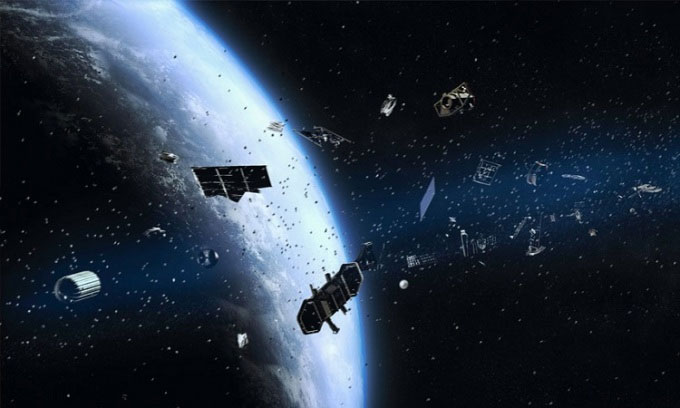Fragments of satellites traveling at speeds of tens of thousands of kilometers per hour can turn into “time bombs,” threatening to puncture the ISS at any moment.
On November 15, Russia destroyed one of its defunct satellites in orbit, creating over 1,500 pieces of space debris flying at hypersonic speeds, posing a significant threat to scientists and astronauts aboard the International Space Station (ISS). Following the incident, NASA confirmed that all crew members were safe. With approximately 7,500 satellites in orbit as of September 2021, and nearly 1,500 satellites launched this year, similar incidents could recur.

Simulation of space debris in Earth’s orbit. (Photo: University of Miami)
It is difficult to imagine how tiny fragments of satellites in orbit can pose a significant danger to the massive space station. If all concerning objects move at relatively similar speeds to maintain their orbits, how can satellite debris reach velocities sufficient to breach the ISS? Most satellites use modern electric propulsion systems equipped with Hall Effect Thrusters, utilizing high-pressure propellant tanks. When struck by high-speed objects like Russian rockets, these tanks can explode, scattering thousands of fragments in all directions.
Satellites using Hall Effect Thrusters, the most commonly used electric propulsion system today, are particularly risky because they rely on high-pressure propellant tanks. If a tank bursts, countless dangerous debris pieces will scatter across the orbital plane, according to Peter Kant, CEO of Accion Systems. Any satellite firing test has the potential to create space debris, as it can explode any target equipped with high-pressure propellant.
Debris can collide with other spacecraft, generating even more fragments in a chain reaction known as the Kessler Syndrome. In the latest incident, the ISS did not suffer significant damage from Russia’s satellite destruction test. However, the threat is exacerbated by the enormous number of satellites filled with fuel. “Imagine 3,700 bombs flying in space, increasing to 7,000 next year”, Kant stated.
Experts are still studying how rapidly moving satellite debris travels through space. Professor Andrew Higgens from the Mechanical Engineering Department at McGill University published a study in 2017 detailing fragments traveling at hypersonic speeds exceeding 36,000 km/h. New satellite destruction tests could lead to global disasters, prompting an earlier-than-expected cessation of ISS operations and altering the low Earth orbit.


















































